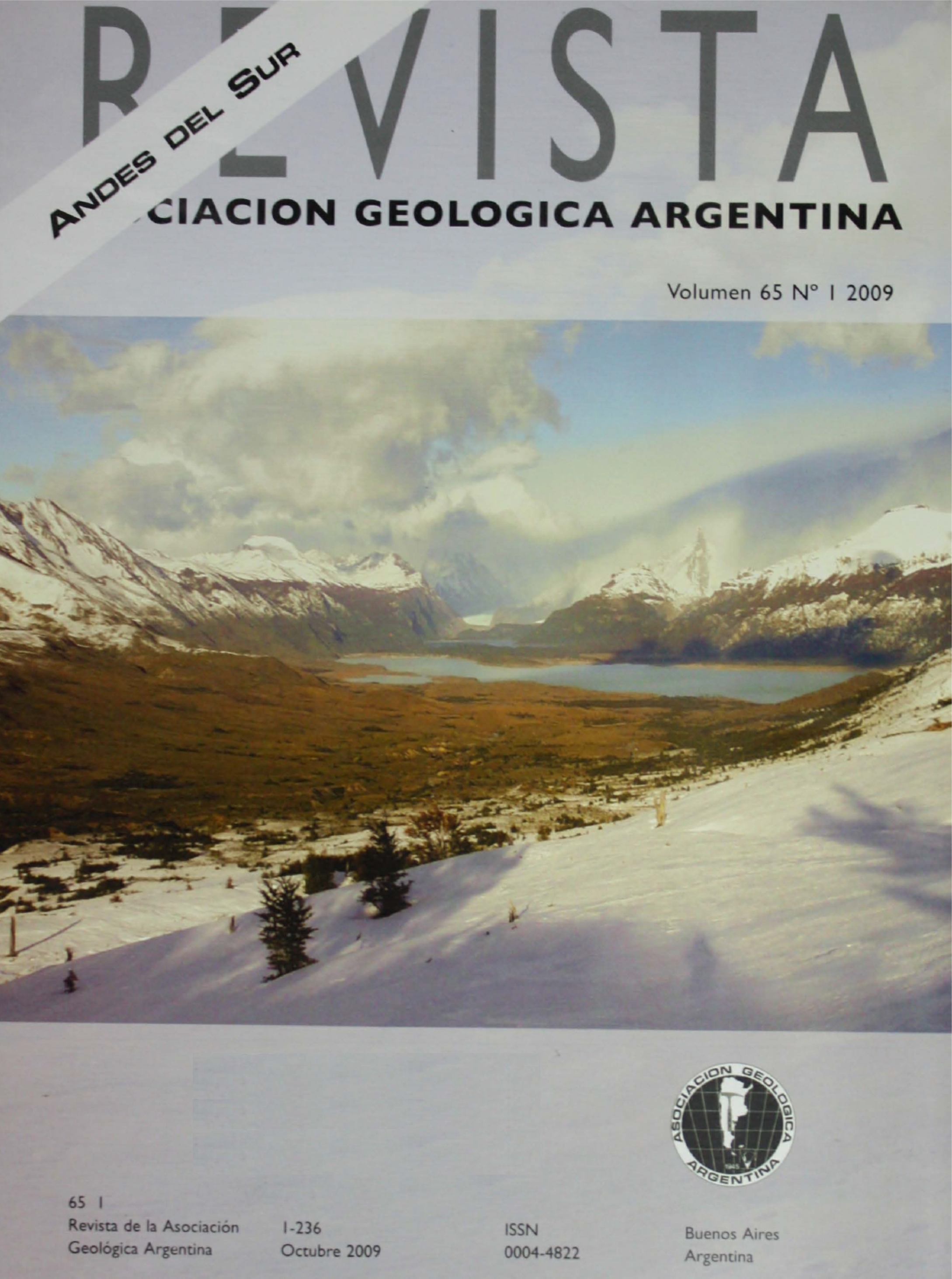The Río Grande and Palauco Cenozoic basin: Age, evolution and structural control, Malargue fold-belt (36°S)
Main Article Content
Abstract
The Palauco and Rio Grande valley area at 36° south latitude is part of the Malargüe fold-belt in southern Cordillera Principal. The Cenozoic tectonic evolution of this area was recorded by volcaniclastic sediments deposited in syntectonic basins. The structural configuration of basement-involved structures at this latitude, defines an internal part where the Rio Grande sub-basin was developed and a frontal part where Palauco sub-basin was paced. The filling of these basins shows a pre-growth stage dominated by basaltic sequences that was present up to about 23 Ma. From 18 Ma with the uplift of the main structures, each subbasin evolved in an independent way. Therefore, the western part of Rio Grande sub-basin was fed by coarse proximal facies related to the uplift of the Sierra Azul anticline, while the distal fine-sediments and evaporates located in the eastern part of the basin wedged-up against Pampa Paluco-Ranquil Co anticline, showing that this structure was already an internal barrier. This stage finished approximately at 11 Ma, age from which both sub basins show again a similar filling dominated by volcanic deposits present in the whole area. During this new stage, different events of reactivation of the Pampa Palauco-Ranquil Co anticline were recorded by angular unconformities observed in the field, which were constrained at 11 Ma and 8 Ma from radiometric determinations. These events also have generated the development of the new deformation front to the east, with the uplift of the Cerro Fortunoso, Loma Amarilla and Rincón Colorido anticlines, giving the definitive configuration to the basin.
Article Details

This work is licensed under a Creative Commons Attribution-NonCommercial 4.0 International License.
Nota de copyright
Los autores conservan los derechos de autor y garantizan a la revista el derecho de ser la primera publicación del trabajo licenciado según una licencia de atribución Creative Commons que permite a otros compartir el trabajo con el reconocimiento de la autoría y de la publicación en la que se publicó por primera vez.
Declaración de privacidad
Los nombres y direcciones de correo electrónico introducidos en esta revista se usarán exclusivamente para los fines declarados por esta revista y no estarán disponibles para ningún otro propósito u otra persona.

